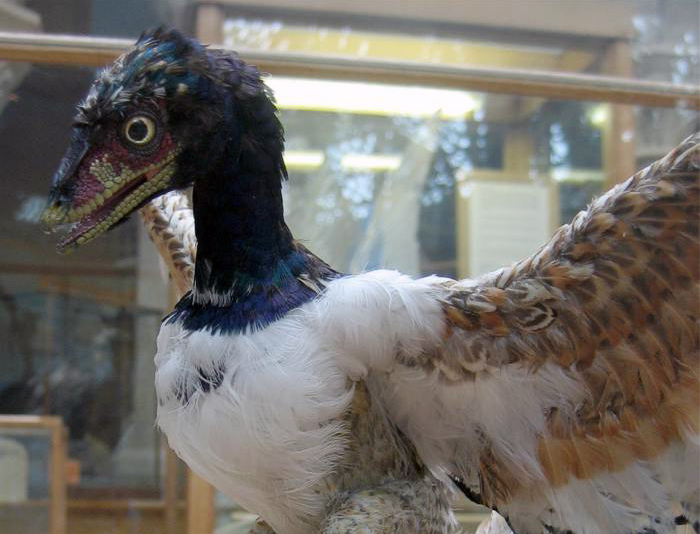The fossil of a dinosaurus bird was discovered about 150 yers ago and considered as a proof of Charles Darwin's theory of evolution.
The unique fossil, the Thermopolis specimen of Archaeopteryx lithographica, was brought by truck from the Wyoming Dinosaur Center to the Stanford Synchrotron Radiation Lightsource in California, where it was scanned by one of the world's most powerful X-ray machines.
Reaserchers try to unravel new details of the soft tissue that once surrounded the well-preserved bones. They study specific traces left in the slab of limestone as the bird decomposed.
The X-rays, generated by SSRL's high-speed electrons as they race around a 260-foot-diameter ring, cause the elements to glow, revealing the ghost of soft tissue or feathers.
"If you want to find a single fossil which is a missing link in the evolution of dinosaurs into birds, this is it," said University of Manchester paleontologist Phil Manning, a member of the research team. "It's a bird with sharp teeth, claws and a long bony tail. If you were to freeze-frame evolution, you would end up with Archaeopteryx."
"What you normally can't see are the chemical elements from the original organism that might still be present in the fossil," said SSRL scientist Uwe Bergmann. "Using X-ray fluorescence imaging, we can bring these elements to light, getting a better look at the fossil and learning more about the original animal."
"These X-rays work a thousand time better than what you could do with a commercial X-ray machine. Only a synchrotron can do this," Bergmann said. SSRL is part of SLAC National Accelerator Laboratory, which is operated by Stanford University for the Department of Energy.
Researchers may also discover new information about how the fossilization process occurs. That could help them to understand the way evolution happens.
The Archaeopteryx fossil has a very interesting story. It was brought to London soon after Darwin published his stunning On the Origin of Species in 1859. The fossils played a major roll in the controversy Darwin had stirred up by launching his evolution theory. "As soon as it arrived in London, all of Darwin's supporters realized that this was an intermediate animal, an evolutionary freak that they needed to study. It was half way between dinosaur and bird. This is the single most important fossil in paleontology for that simple reason." " It was used to beat the living daylights out of the nonsense which had been put forward as to the reason for why animals were present on this planet. Here, Darwin's theory of descendant with modification was hammered home with this one example of transitionary form, of an animal between dinosaur and bird."

